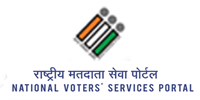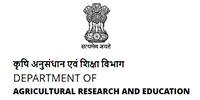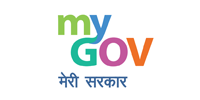Checklist for assessing gender sensitivity in institutional programs
Back ground
For making the program gender sensitive, gender components should be incorporated in every major stages (planning, rapport building, execution and impact assessment) of program implementation. Therefore, effort has been made to prepare a checklist containing questions related to gender/women at different stages of the program for self assessment by the program coordinator. This will help/guide the program coordinator in visualizing and implementing gender concept in each stage of the program as well as might ensure gender sensitivity in their program.
Technology description
This checklist follows a gender analysis framework and is intended to be comprehensive, flexible and adaptable. The checklist consists of 26 statements/items to be used as check while assessing gender sensitivity in the institutional programs. The equal weightage is assigned to each statement/item in checklist. The checklist statements may be administered to the program coordinators on two point continuums, viz. Yes and No with the scores of 1 and 0, respectively. The overall possible maximum and minimum scores are 26 and 0, respectively. Thus, gender assessment value of each response/program ranges from 0 to 1 i.e. when it is lowest, the score will be 0 and when it is highest, the score will be 1. The higher gender assessment value indicate greater gender sensitivity in institutional programs. It will be calculated by following formula;
Gender Assessment Value= (Obtained Score)/(Maximum Possible Score) = (Out of 26)/26
Use the following checklist for assessing gender sensitivity in institutional program:
| Sl. No. | Statements | Yes | No | ||
|---|---|---|---|---|---|
| 1 | Was any of the project objectives addressing to gender? | - | - | ||
| 2 |
|
- | - | ||
| 3 | Was any woman scientist/technical personnel in project team? | - | - | ||
| 4 | Was any of the project staff/team aware of gender concepts? | - | - | ||
| 5 | Had you developed/used methodology for measuring gender indicators? | - | - | ||
| 6 | Had you identified existing needs and opportunities through direct consultation with men and women farmers? | - | - | ||
| 7 | Had you targeted both men and women farmers as a beneficiary of project? | - | - | ||
| 8 | Had you selected equal number of men and women beneficiaries in the project? | - | - | ||
| 9 | Had you organised any gender awareness program for them? | - | - | ||
| 10 | Had you considered the personnel, time and location accessible to both men and women farmers for the project activities? | - | - | ||
| 11 | Had you ensured the participation of both men and women farmers in project activities? | - | - | ||
| 12 | Had you provided the farm technologies according to the needs of both men and women farmers? | - | - | ||
| 13 | Were the provided farm technologies compatible with socio-cultural climate? | - | - | ||
| 14 | Had you collected gender disaggregated data? | - | - | ||
| 15 | Had you analysed the collected data from gender perspective? | - | - | ||
| 16 |
|
- | - |
How it is women friendly?
It ensures the effective implementation of gender perspective in the institutional programs.
Performance:
It can be tested with any institutional program.
Locale of dissemination/ application:
Agricultural research and development projects
Outcomes/impact/benefits:
Gender sensitive agricultural research and development projects
Limitations if any
It requires suitable modification based on the type of research and development projects
Photos
Nil
Source (author/organization):
Mishra, S., Sarkar, A., Sahoo, L. P., Moharana, G. and Argade, S. D. ICAR-Central Institute for Women in Agriculture, Bhubaneswar, Odisha
Developed/tested/refined:
Developed and tested
Year and purpose:
2017; To assess gender sensitivity in institutional programs
Cost:
Contingency: Nil
Patent/Commercialization:
Nil
Weather further study/ modification are required or not:
Yes, needs further modification based on institutional programs.
- Back to previous page
- |
-
Page last updated date:30-05-2024 03:11 PM
 भारत सरकार | Government of India
भारत सरकार | Government of India









